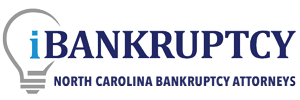Advice Our iBankruptcy Attorney Will Provide After Analyzing Your Situation
In A Nutshell
1) Chapter 7 vs. Chapter 13 vs. No Bankruptcy
2) Estimated Monthly Payment In Chapter 13
3) Timing Of Filing The Bankruptcy
In More Detail
1) Chapter 7 vs. Chapter 13 vs. No Bankruptcy
I have previously discussed all of the documents and information you should provide to me to allow me to properly analyze your situation. This is a lot of information and can be a burdensome task. Our online intake form helps this process. All of this information provides an open door into your life and includes everything regarding your financial situation. After receiving, I will parse through all of this information, likely have more questions for you about your situation, and then provide you with an analysis of what I think is best. I have guided many people through their own bankruptcy filing, and you can confidently rely on my advice.
First and foremost you need to know what type of bankruptcy, if any, you MAY file to properly deal with your particular type(s) of debt. You may need a Chapter 7 if you have unsecured debt (i.e. credit cards, medical bills, personal loans) that you cannot afford. Or Chapter 13 may be needed to stop a foreclosure of your home or repossession of your car.
Next, you will need to know which type of bankruptcy, if any, you MUST file due to your financial situation or the assets you own. The Bankruptcy Code may dictate that because of certain factors present in your situation you must file one type of bankruptcy rather than the other. You may be forced to file a Chapter 13 because you have higher than median income or because the value of your property falls above the exemption limits. (See 5 Factors To Determine If You Should File Chapter 7 Or Chapter 13 Bankruptcy).
2) Estimated Monthly Payment In Chapter 13
After analyzing a client’s information, I typically provide them with an estimated Chapter 13 monthly payment…and will do this for you. Your Chapter 13 payment will consolidate all of your debt payments into one monthly payment. You can find more details about what your monthly Chapter 13 payment will include by reading my previous post “Chapter 13 Bankruptcy – 4 Things To Know”.
I like to provide the monthly Chapter 13 estimated payment to my clients despite the type of bankruptcy they think they want to file. At times, clients tell me they want to file a Chapter 7. While certainly respecting this, I also want them to understand Chapter 13 bankruptcy and what it would look like for them. This will allow them to make a more educated decision about the type of bankruptcy that is best for their situation. That being said, if Chapter 7 is the better option (and often it can be), then I will so advise.
I will provide you with a breakdown of what is included in your monthly payment, where your money is being dispersed, and the length of time I believe your bankruptcy will last. Your monthly payment will include payment on your secured debts (i.e. house, car, etc.), priority debts (i.e. taxes), attorney fee, trustee administration fee, and possibly a percentage of your unsecured debts (i.e. credit cards, medical bills, personal loans, etc.). The amount of money paid monthly through your Chapter 13 payment to each of these creditors (except for your mortgage and its regular monthly payment which remains the same) is different than the amount you are paying them now. Chapter 13 allows you to pay most of your debts through a more affordable payment. You will typically make 60 monthly payments (5 years) in a Chapter 13 bankruptcy. But if you can afford a higher payment, then you could make as little as 36 monthly payments (3 years).
For example: you currently owe $15,000 on your car with an 18% interest rate and a $450 monthly payment. The portion of your monthly Chapter 13 payment (if your bankruptcy lasts 5 years and using an interest rate of 6.75%) paid on the car loan will be $295.25.
3) Timing Of Filing The Bankruptcy
There may be certain factors present in your situation that require you to file bankruptcy as soon as possible, or it may be beneficial to wait and file a bankruptcy after a certain key date passes. This is the type of counseling that I will provide to you when determining what to do about your debt situation.
If your car is about to be repossessed or your house foreclosed upon and you desire to keep that asset, then filing a Chapter 13 will immediately stop these collection efforts from occurring. You will save your car and/or house. If your wages are about to be garnished for old tax debt that would be considered “non-priority” under the Bankruptcy Code, then you may want to file a Chapter 7 as soon as possible to stop the garnishment.
On the other hand, if you delay filing a Chapter 13 by more than 910 days since you financed your vehicle, then you can “cram down” the vehicle loan by paying the value of the vehicle rather than what you owe. This can be extremely beneficial if you are upside down on your vehicle…owing a lot more than it is worth. Another consideration is whether or not you have filed a previous bankruptcy. The rules regarding when another bankruptcy can be filed following a previous bankruptcy are somewhat convoluted. Just know that depending on when your prior bankruptcy was filed and whether or not you received a discharge, you must wait a certain amount of time before another bankruptcy can be filed.
Certainly there are other reasons to file a bankruptcy as soon as possible or delay filing because of your circumstances. I will be able to answer this riddle and others regarding your bankruptcy. Begin this process by filling out our online intake form.
